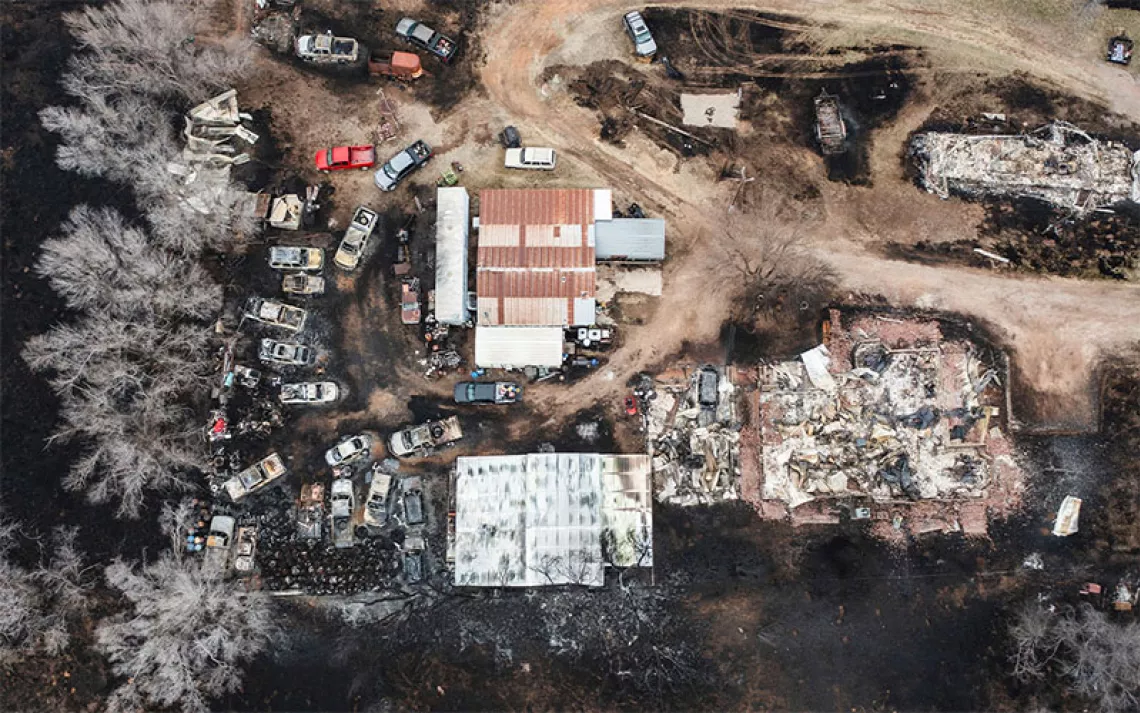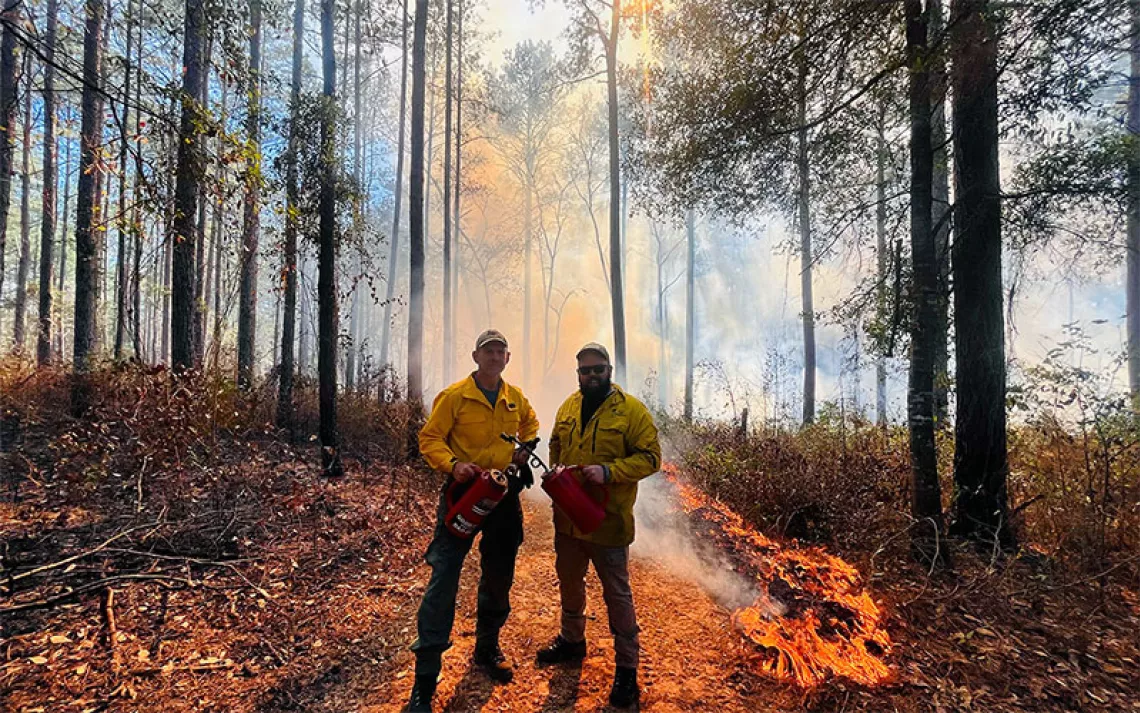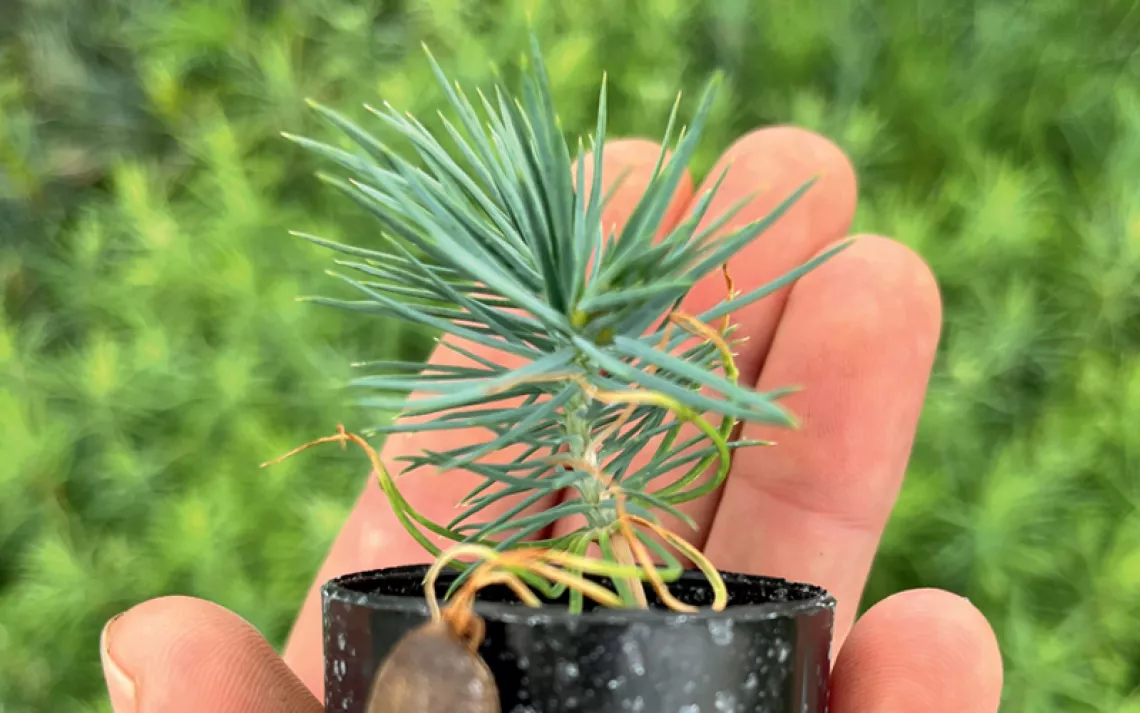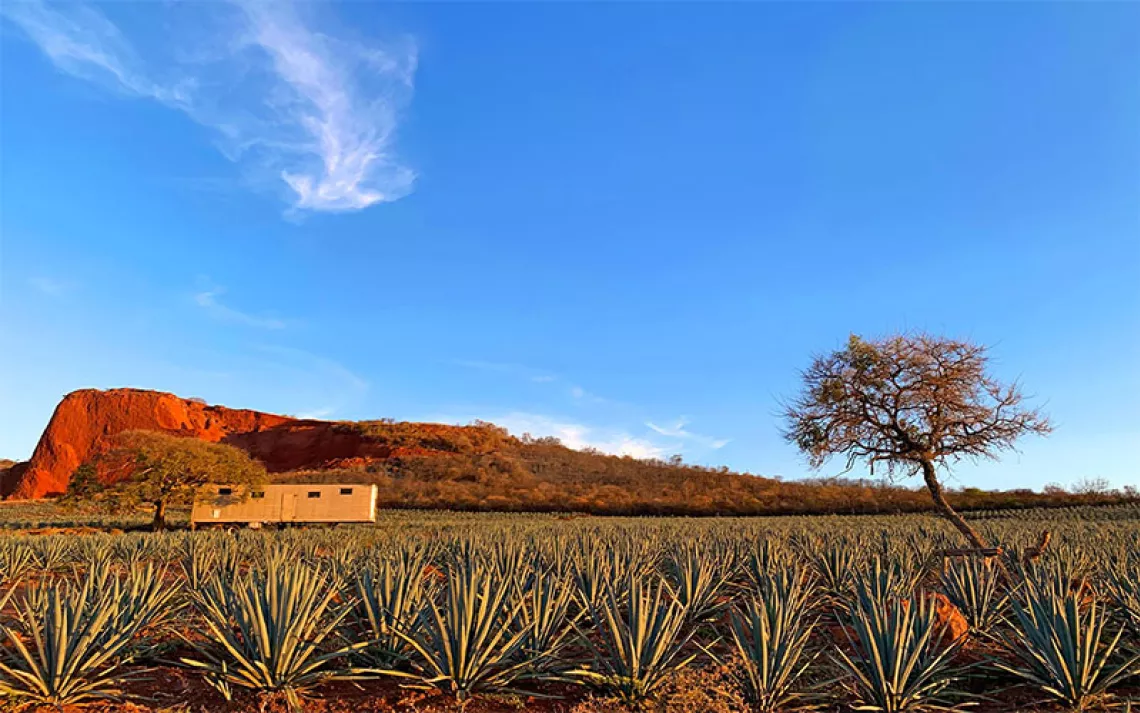Invasive-Grass Fires Are Not Just a Western Problem
A new study shows many species of invasive grasses are increasing wildfires
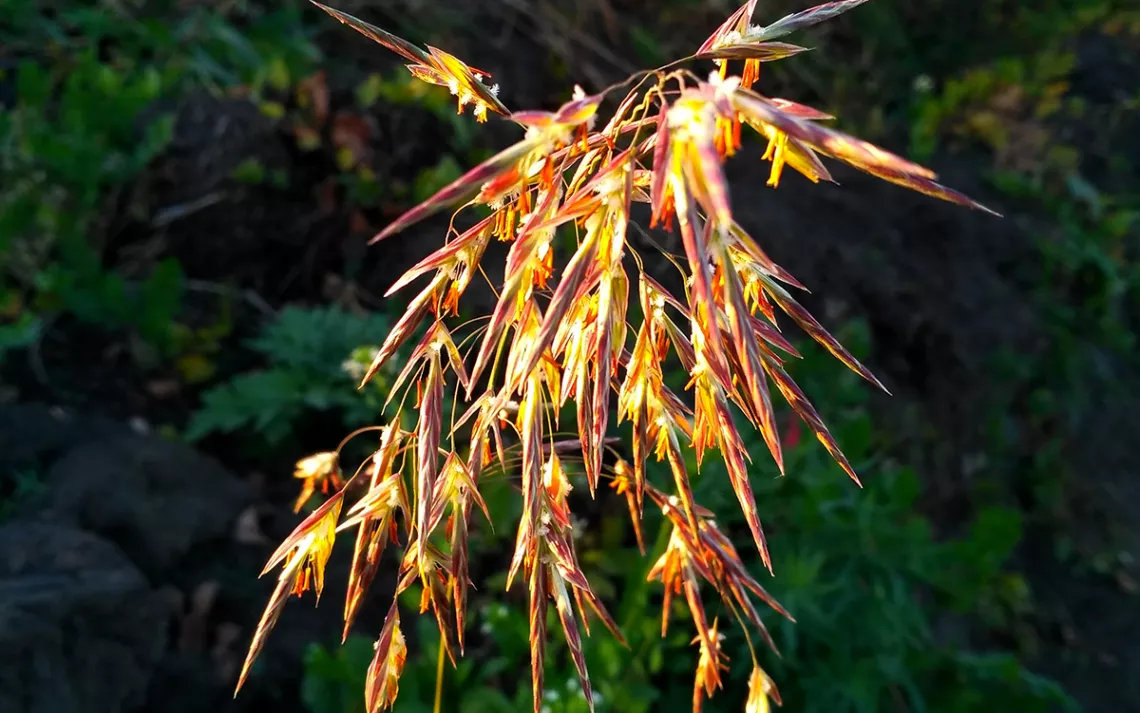
Photo by Everpie/iStock
Cheatgrass is infamous in the conservation world. The Eurasian species, which came to the United States in the last half of the 1800s as packing material or mixed in with grain, has spread to 49 states. The greatest impact has been in the Great Basin, Nevada, where in some areas it has overwhelmed native vegetation and dominates the landscape, covering about 10 to 12 million acres.
The biggest problem with cheatgrass is that it’s highly flammable. Most areas of the Intermountain West naturally burn every generation or two, but those full of cheatgrass dry out early and ignite easily, setting the landscape on fire every three to 10 years.
While the impacts of cheatgrass are well known, it turns out that other invasive grasses are serving as bio-arsonists in ecosystems across the United States. A new study in the Proceedings of the National Academy of Sciences took a look at 12 non-native grass species found in North America, finding that eight of them are bumping up fire frequency by 150 percent.
To understand the fire impact of invasive grasses on a national scale, lead author Emily Fusco of the University of Massachusetts Amherst and her colleagues shortlisted invasive grass species they suspected of increasing fire frequency. Using the latest data on where these species occur, they were able to map out invaded and uninvaded areas with a resolution of 500 x 500 meters, or 64 acres per pixel.
The team then overlaid satellite data and fire records to see if the areas with non-native, invasive grasses burned more frequently than normal between 2000 and 2015. Controlling for human and ecological factors that might lead to more wildfires, they found that eight of the 12 species studied led to the increased frequency of wildfires across many different habitats. Cogon grass, native to Africa or East Asia, increased fire in southeast pine forests. African buffelgrass is causing deserts in the southwest that are not adapted to fire to burn. Japanese stiltgrass is making eastern forests more flammable, and the Intermountain West is infested with Mediterranean medusahead. Mediterranean grass, which has colonized much of the desert in Southern California, triples fire frequency.
The work shows that the fire potential of invasive grasses is not just a problem in western rangeland; it's a national concern. “Most of the work done up until this point has been at a smaller scale, looking at one or two species within one ecosystem,” Fusco says. “This is the first time we've been able to really capitalize on big data and the ability to analyze big data sets to look at how invasive grass species across the US might be impacting our national fire regimes.”
When tens of thousands of acres of cheatgrass go up in flames, it’s easy to understand the plant’s impact on native ecosystems. But Fusco says some of the impacts of these other grasses may be going under the radar. For instance, land managers may not notice an uptick in fires in ecosystems that already burn frequently, like pine forests. But the study suggests the addition of flammable grasses may be pushing these habitats to a point that native species can’t cope.
That means land managers may need to pay more attention to the spread of non-native plants. “This work shows that invasive species are one of the 'big three' ways that people are changing fire regimes—climate change more than doubles the likelihood of fire, human ignitions triple the fire season, and now we can add invasive species fueling fires,” ecologist Bethany Bradley, senior author of the study, says in a statement.
Managing these grasses, however, is easier said than done. If the experience with cheatgrass is any indication, it will take dedicated research to deal with the invasive grasses. For decades, land managers battled cheatgrass using herbicides, which knocked down the annual plant for a few months but did nothing to stop the seeds in the soil from sprouting later.
Over the past decade, researchers have worked on turning one bacteria, Pseudomonas fluorescen, into a biocontrol agent that attacks cheatgrass at the root, causing stunted growth. Currently, one version called D7 is being tested, and other strains of the bacteria are in the works. A selective herbicide called imazapic has also been used over the past decade to tackle large areas of cheatgrass. But none of these solutions are a silver bullet. They are expensive and need to be applied at the right time, using the right techniques for sometimes negligible results.
Fusco says her team’s work at least lets land managers know the scale of the problem. Even if they can’t currently eradicate the flammable species, it allows them to focus their resources on removing or keeping the grasses out of high-quality or sensitive habitats that won’t tolerate burning.
“A lot of people have been thinking about grass and fire for a long time. So I think they’re happy to see that there’s a way we can actually put some numbers behind what’s going on,” she says. “It makes it a little more concrete and a little easier to think about when you can look at it this way.”
Next, the team hopes to do some fieldwork and drill down on several of the problem grasses to see if their spread has ecological impacts beyond increasing fire frequency.
 The Magazine of The Sierra Club
The Magazine of The Sierra Club
